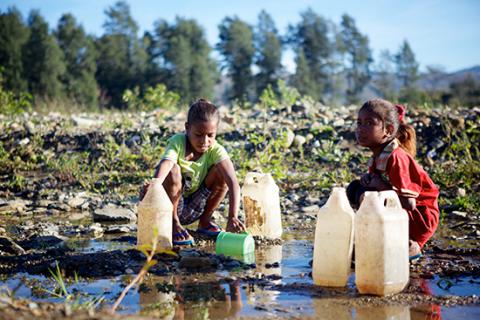
For those of us who are lucky enough to have water on demand we may take the simple necessity of having clean water running from a tap for granted. But for millions, access to clean water doesn’t come so easy. In fact, having access to clean water could be a matter of life or death. So here are ten reasons why improving access to clean water for the world’s poorest can help end poverty this World Water Day.
1. 663 million people don’t have access to safe drinkable water - that’s one in every nine people.

2. The average American uses 80-100 gallons of water a day, ten times more water than the average person in a rural community in sub-Saharan Africa.

3. A one-minute shower with a conventional showerhead uses more water (at least five gallons) than most people in sub-Saharan Africa use in an entire day for basic drinking and hygiene purposes (the average is two-five gallons).

4. According to WHO, five gallons of water is sufficient for very basic drinking, cooking, and hand washing needs in a developing country, but other common tasks that require larger volumes of water such as bathing or laundry are difficult to achieve with only five gallons.

5. In Africa and Asia, women and girls walk an average of 6km a day carrying water that weighs more than 40lbs. Imagine that. It’s equivalent to carrying two cases of soda, or a 40” flat screen television for more than 3.5 miles.

6. Every day people - mostly women and girls - spend 125 million hours collecting water. With safe access to clean water, those hours could instead be spent in a classroom, on income generation, or having fun.

7. 66 children die from diarrhoea every hour - access to clean water reduces this risk significantly.

8. When schools have water and sanitation facilities, attendance rates increase, especially for girls. Unfortunately, globally one third of all schools lack access to sanitation and drinkable water.

9. 160 million children suffer from stunting and malnutrition, which has lifelong impacts on their health, education, and economic potential. 50 per cent of malnutrition is linked to lack of clean water and sanitation.

10. 2.6 billion people have gained access to improved drinking water since 1990.
Source: plan-uk.org
 FR
FR EN
EN AR
AR








